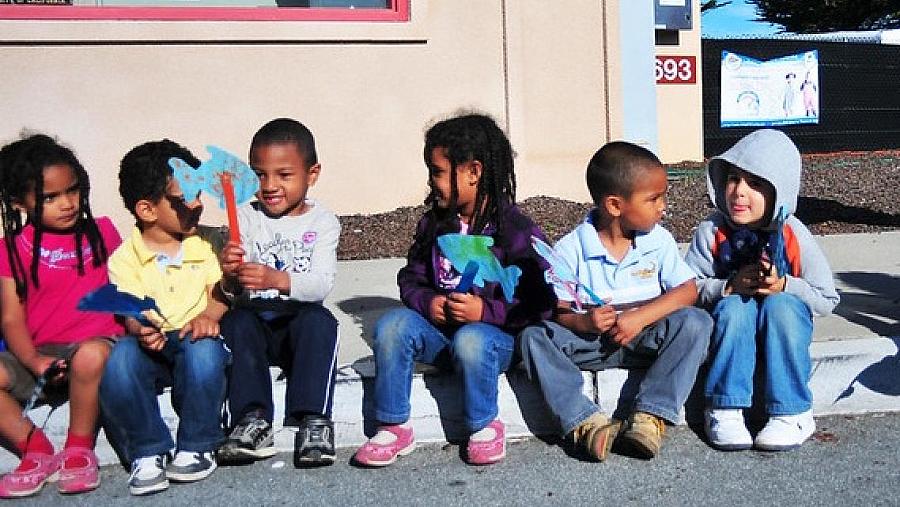What does it mean for kids to live in one of California’s ‘child care deserts’?

Photo via Creative Commons/Flickr
During my reporting on early childhood care and education for KQED, I repeatedly heard about the outsized role the first three years of life play in brain development. Equally ubiquitous was the importance of identifying developmental delays and learning disabilities early.
Those guiding principles took on additional importance as I came across a statistic from the Center for American Prosperity: More than half of America’s children live somewhere without an adequate supply of licensed child care providers. The same research found that 60% of Californians live in what’s known as a “child care desert,” where the number of spots in licensed child care facilities is inadequate for the number of children. The number jumps up for low-income Californians – 72% of them live in a child care desert.
Intrigued, I scoured the internet to learn more. I found coverage of parents’ struggles to find and afford child care, but little to nothing focused on what this paucity of care meant for kids.
This project aims to fill that void. My goal for this project for the 2023 California Health Equity Fellowship is to bring attention to child care deserts throughout California, to find out if and how they negatively affect children, and to highlight possible solutions for communities and parents.
Early childhood educators and caregivers play an important role in identifying learning differences and developmental delays among young children. In communities with few to no child care options, who steps in to fill that role? Are developmental delays more likely to be missed? Are appropriate care and treatment available?
The first part of this project will explain the prevalence of child care deserts in California and why they persist in low-income areas. This story will discuss how low wages and other factors lead to a shortage of child care providers.
For the next story, I will seek out research on a possible relationship between a lack of child care and missed diagnoses in children with learning disabilities or developmental delays. This data may not exist, but I will try to find information that can at least indicate the regions and groups in California that are not being adequately assessed. I will reach out to experts in early childhood education to find out what indicators suggest that a community is not adequately assessing its children. I’ll speak to elementary school educators in child care deserts about undiagnosed learning differences and delays in students entering transitional kindergarten and kindergarten.
This story will also examine California’s system of early childhood developmental assessments: who gives them and when, and what enforcement or tracking is in place to ensure that the assessments take place.
It’s important to me that this project go beyond simply identifying the problem of child care deserts but that it also explore possible solutions. I’ll highlight strategies that the state and local communities are utilizing in their attempts to increase the number of licensed child care providers. What are policymakers doing to bring new workers into an industry plagued by low-wages? Is it possible to expand capacity while still maintaining quality care and meeting regulations? Are local municipalities able to fund early childhood care and education at a higher rate than the state? What unique challenges exist for rural communities trying to add more child care slots? What about urban ones?
As part of providing solutions, I hope to publish an online article that includes information about early intervention resources available to parents in California, including Early Start, the state’s “early intervention program for infants and toddlers with disabilities and their families.”
Radio will be the main platform for the stories in this project, but online articles will be published as well. The radio stories will feature the voices of parents, kids and caregivers and use audio to establish several scenes throughout California. I’ll seek to profile at least two families, spanning different regions of California.

